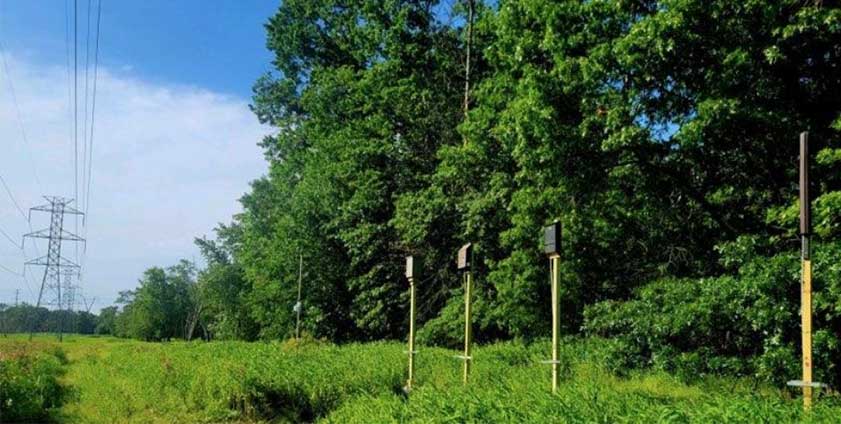At Forefront of Protecting Endangered Species

August 21, 2024
 JCP&L has installed 64 artificial, free-standing bat roosts along two transmission rights-of-way that run through Warren, Morris and Union counties as part of our ongoing efforts to protect endangered species near electrical infrastructure.
JCP&L has installed 64 artificial, free-standing bat roosts along two transmission rights-of-way that run through Warren, Morris and Union counties as part of our ongoing efforts to protect endangered species near electrical infrastructure.
This work is part of a collaborative research study with the Electric Power Research Institute (EPRI) aimed at providing additional habitat for the federally-endangered Indiana and northern long-eared bats, as well as the little brown bat which is under review to be potentially listed as endangered or threatened. The northern long-eared bat and little brown bat in particular have recently seen severe population declines due to a fungal disease known as white-nose syndrome, which has resulted in increased regulatory protections for these species. The study aims to assess the effectiveness of these structures in providing additional roosting habitat, while identifying ideal conditions for bat occupation.
A bat roost is a location where bats take shelter or protection, often found in trees, attics and barns. Built on 4-by-4 wooden posts, the clusters of newly installed structures are 16 feet tall and built about 10 feet apart. The roosting posts are installed along the outer sections of the JCP&L rights-of-way at varying distances from the wooded edges of the properties. Half of the new structures are situated between Pohatcong, Warren County and Wharton, Morris County, and the remaining structures were installed between Summit, Union County, and East Hanover, Morris County.
“When we build a new transmission line, there is potential to cut down trees that bats could have used in spring and summer months for roosting. This research project is installing artificial habitat to replace some of what has been removed,” said Michelle Dellinger, Advanced Forestry Specialist. “We are excited to be at the forefront of electric companies helping to mitigate the impact on threatened and endangered bat species.”
EPRI researchers installed acoustic monitors near the poles and will observe the roosts for two years. A guano catcher installed at each pole will collect evidence of bat presence and provide samples to determine species and other information about the roost dwellers. Researchers will use the information to assess what conditions are better suited to creating artificial habitats, including location, temperature, solar exposure and more.
We are a staunch supporter of protecting wildlife and preserving their environment. Since 2016, JCP&L has safely relocated approximately 20 osprey nests, most of which have successfully produced osprey over several seasons. This year alone, crews are monitoring more than 60 nesting sites, including 30 active nests, with the remainder of the sites showing intermittent activity this season. We have also installed nesting platforms on top of wood utility poles to keep nesting birds away from energized equipment and out of harm’s way.